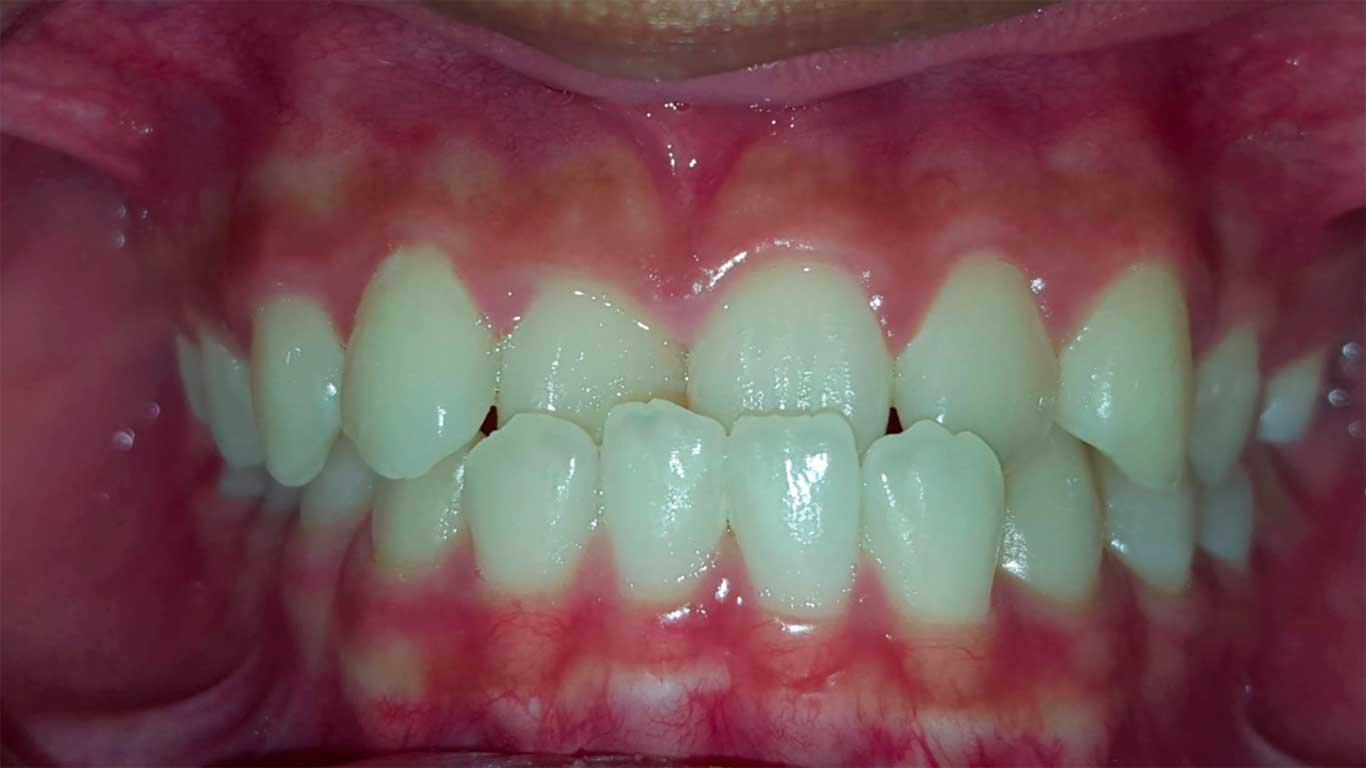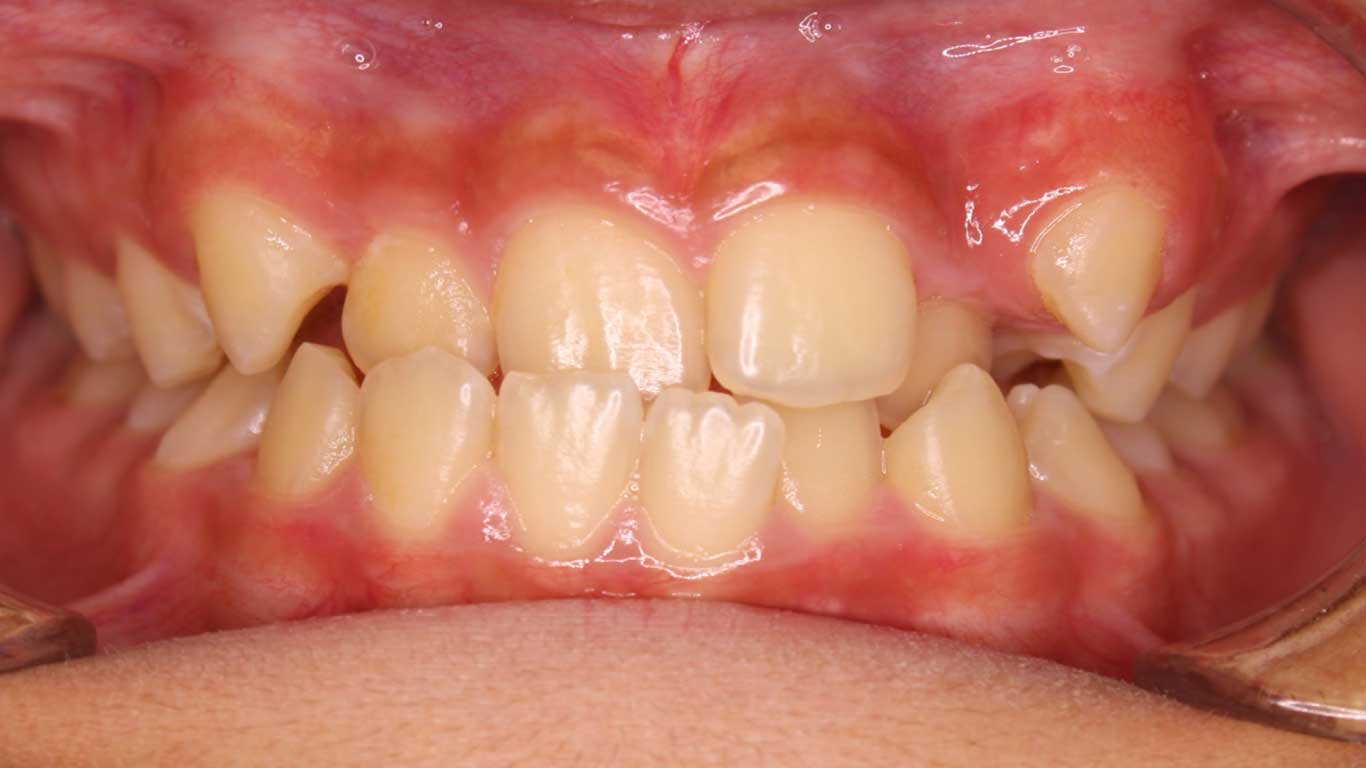Can Invisalign fix snaggletooth?
Believe it or not, your smile is your signature, leaving a lasting impression on people and capturing their attention instantly.
Snaggletooth, for some people, is a sign of their unique aspect of their personality, while for others, it’s a reason to be closed-lipped in photos and afraid of broad smiling!
If you fall into the latter category or if your snaggletooth is becoming problematic, it means you need the right treatment and move the wayward tooth back into alignment. But the question is, can Invisalign fix snaggletooth? Read this article to find out.
What’s Exactly a Snaggletoothtooth?
In fact, the word “snaggletooth” can refer to various types of misalignment and not necessarily indicate a specific dental condition. A snaggletooth may be crooked, protruding, recessed, twisted, or shaped differently than other teeth.
How Does Snaggletooth Develop?
For some individuals, snaggletooth develops in childhood, while others may experience teeth shifting into undesirable positions due to poor oral health or bad habits after puberty. Snaggletooth is typically caused by crowding, regardless of when it develops.
Due to the intricate nature of teeth and their supported structures, specialized specialists are required for their treatment. Therefore, there’s no surprise that snaggletooth is the result of multiple factors.

Here are some common causes:
Thumb-sucking in childhood
Thumb-sucking can be a reason of snagglingtooth. Thumb-sucking in babies is often a self-soothing habit that may continue into toddlerhood.
After coming milk teeth, thumb-sucking can shift the teeth from their aligned positions. And unfortunately, the positioning of baby teeth can impact how adult teeth erupt later on.
Early loss of baby teeth
In most children, baby teeth will fall out around the age of 6, and their last are typically gone by the age of 12. If primary (baby) teeth are lost before the age of five, it can create a narrow space for the incoming permanent teeth, leading to overcrowding issues.
Without orthodontic intervention, the teeth will naturally attempt to resolve the issue by shifting and pushing the other baby teeth with narrower roots out of alignment, resulting in the development of a snaggletooth.
Tongue thrust: Other reason for snaggletooth
Believe it or not, one of the most powerful muscles in the body is the tongue. No matter how well your teeth are strong and aligned, repetitive force from the tongue can ultimately push them out of place. Tongue thrust, typically found in toddlers and infants, but we see this unconscious habit in some adults!
The truth is that no matter when this habit develops in your life, the result is the same: a snagglethooth appearance!
Large teeth or a small jaw
Just as human beings vary in terms of their shapes and sizes, our teeth and jaws also exhibit a wide range of variations.
Some individuals may have oversized teeth or even be born with a small jaw that cannot fit the average-sized teeth. In both cases, teeth have no choice but to push smaller-rooted teeth out of alignment to solve the problem.
Gum disease, bone loss, and bruxism
While the term “bruxism” may be unfamiliar to many, its defining action is well-known: unconscious grinding or clenching that puts lots of stress on the teeth and their supporting structure. This unconscious habit can lead to gum disease, bone loss, and eventually tooth migration, resulting in a snaggletooth appearance.
So, don’t forget that bruxism isn’t limited to only gum disease and bone loss; it can also lead to snaggletooth and other misalignment issues.
Snaggletooth and Its Relation to Oral Health
Regardless of how the snaggletooth developed, it often indicates an underlying issue: tooth crowding. Please pay attention that having only one misaligned tooth among otherwise healthy and aligned teeth can still be problematic. While in some cases a snaggletooth may not cause any significant issues, assuming all the other teeth fit perfectly despite the appearance of a snaggletooth is not accurate.
Even if other teeth appear to be aligned properly, the presence of a snaggletooth can still have implications and potential consequences.
Therefore, if you leave a snaggletooth untreated, you should expect potential long-term issues to arise:
Root exposure
Root exposure alone isn’t a problem; it occurs due to gum disease. As the gum recedes further, more of the underlying tooth structure, including the root, becomes exposed. This increased exposure can result in both pain and tooth decay, as the lower parts of the tooth are softer and more susceptible to damage.
Cavities
A snaggletooth gives bits of food an ideal place to hide because toothbrushes can’t get into tight spaces effectively. Plaque and tartar can develop, leading to tooth decay and cavities, even if you regularly floss, as flossing can miss certain areas.
General alignment issues
Snaggletooth is inherently a misaligned tooth; thus, it may encounter various problems that come with a misaligned tooth. Overall, misaligned teeth can lead to detrimental effects on your mouth, including jaw strain and uneven tooth wear.
Breakage
Aligned teeth can evenly distribute the force of chewing. A snaggletooth is inherently out of alignment and therefore, more susceptible to experiencing additional forces during chewing, leading to breakage or cracks.
Speech Issues
We produce sounds by coordinating the movement of the tongue with the position of the teeth. In nearly all languages, the standard sounds rely on the connecting the tongue with well-aligned teeth. Crooked teeth, teeth that are out of standard midline, and protruding teeth can significantly alter the way you produce sounds and cause difficulties while speaking.
Limitation for Invisalign
However, Invisalign for fixing snaggletooth can be a great approach to addressing the issue, but in some cases, it nearly cannot solve the problem. In another word, like other orthodontic treatments, Invisalign has its own limitations.
When considering Invisalign for fixing snaggletooth, 3 factors indicate whether it can be a good option:
- Tooth shape
- Tooth rotation
- And tooth height
In the following discussion, we delve deeper into these three factors.
Tooth shape
Sometimes, the tooth shape is an issue and won’t allow us to use aligners for its proper treatment. Invisalign needs to be gripped on each tooth to put the desired pressure on them and push them into the desired position. But if a tooth is pegged, rounded, or has a sharp tip, using Invisalign can’t be our option, as it may not be possible to get the right grip.
Tooth rotation
Tooth rotation is a common cause of snaggleteeth. Typically, Invisalign can be a suitable option for correcting rotations of 20 degrees or less. However, if the rotation exceeds that limit, an alternative clear aligner treatment called 3M Clarity can be used, which can handle rotations up to 30 degrees. If the rotation is more severe than these degrees, braces will likely be the ultimate solution to address the issue.
Tooth height
Another common reason for snaggleteeth is tooth height, when a tooth is higher or lower than the rest in the gum line.
In such cases, Invisalign for fixing snaggletooth can’t be a suitable approach, as it’s unable to effectively address lower or higher teeth. So typically, the best approach is to use braces or 3M Clarity.
How to Fix Snaggletooth Without Braces?
If you have a suitable tooth shape, do not require raising or lowering of teeth, and have a tooth rotation of 20 degrees or less, Invisalign is an ideal, straightforward, and effective approach to addressing the issue.
The first step is to contact York Orthodontics and schedule an appointment. They’ll perform diagnostics, including a 3D scan, x-ray, and photographs, to evaluate your bite and gum effectively. Dr. Mir will then design your treatment plan using the Invisalign software algorithm.
Snaggletooth treatment typically involves the use of attachments, which provide better grip for aligners and allow for more fine-tuned control over tooth movement. On the day you receive your first aligners, you’ll have your attachments placed. Then, Dr. Mir can repair or update them as necessary throughout your treatment.

Final Thoughts
If your snaggletooth is a problem, you’ll need to correct it. Invisalign for fixing snaggletooth can be a great solution if your tooth has a good shape, doesn’t require raising or lowering, and has a rotation of 20 degrees or less.
If your issue is more severe, you’ll probably need other in-office aligners or traditional braces to address the problem effectively.
FAQ
Is age a matter for snaggletooth treatment?
Not actually. But the older you are, the more likely you are to have issues like gum disease and tooth decay, which can affect the treatment or delay it significantly.
Can pacifiers in babies cause snaggletooth later on?
They may lead to snaggletooth, but it’s less likely because they are much softer than the thumb. On top of this, usually parents help their kids to wrap up the habit before it becomes problematic.
Can snaggletooth be hereditary?
Yes, genetics can play a role in having snaggletooth, but the impact of poor habits and injuries is significantly greater in the development of the issue.
How long does Invisalign take to fix snaggletooth?
In some cases, snaggletooth treatment may involve moving a few teeth, while in others, it may require repositioning the molars, which has a great impact on the duration of your treatment. On average, the treatment duration for most patients ranges from 12 to 18 months.
